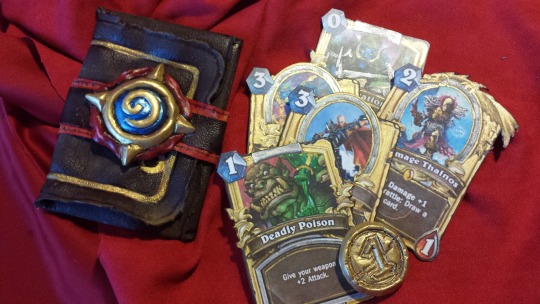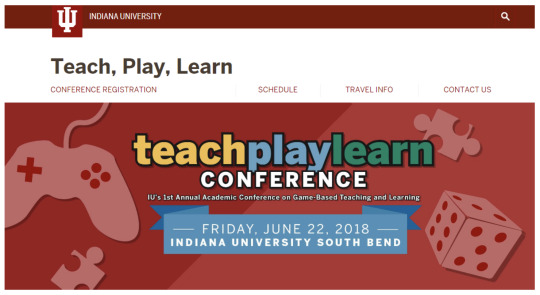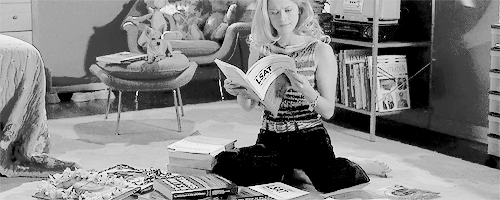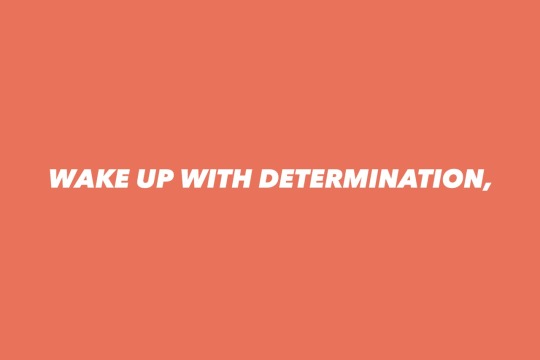Photo



i’ve yet to power through my art history readings but tonight is the night! let’s do this!
// 11092017
3K notes
·
View notes
Photo


I’ve been going pretty hard on gesture drawing the past few days. ~1-2 min each. My two favorite gesture drawing resources are New Masters Academy and the Croquis Cafe on Youtube. :)
3K notes
·
View notes
Photo

Some hand studies with watercolor & prismacolor pencils
24K notes
·
View notes
Note
How do you stay motivated?
Motivation is a fickle bitch. Don’t expect motivation. You don’t stay motivated; you work through the periods of exhaustion and disinterest with relentless discipline and enjoy the moments of motivation when they come, ride the wave, and then struggle through the depths again.
(Habit, not motivation, should be your best friend. Routine, persistence, patience.)
16K notes
·
View notes
Video
youtube
1 note
·
View note
Photo




One of the perks of studying game design in SoCal is that Blizzard HQ is really close, and today I get to go on a tour! (I’m internally freaking out, it’s gonna be so awesome)
Anyways, in honor of that I made myself a Hearthstone Pack, and along the way it turned into a wallet!
I’m really happy with it, and I managed it in ~5 hours.
(Brown garment leather, leftover red microsuede, apoxie sculpt, two awful magnets, sandpaper, and some nice metallic paint)
EDIT: Since so many have expressed their desire for one of these wallets, I’ve decided to put a listing up on Etsy for more: https://www.etsy.com/listing/218805573/hearthstone-pack-wallet.
202 notes
·
View notes
Photo


June 17 2018
So I applied for this position as an illustrator for a new chemistry textbook that will be offered to UCLA students as a free resource (chem dept at ucla is trying to make all resources free to students) anD I GOT A REPLY BACK and the professor asked me to send in a sample so i sent trusty myoglobin, drawn using the procreate app on my ipad pro!!!
really hope they’re like OK u got it! because oml this would be my dream
982 notes
·
View notes
Photo


always start my mornings with some planning and some coffee 💕(unless I have an early class bc ain’t nobody got time for that at 6am)
peep my insta for more regular post: @the_girlygeek
4K notes
·
View notes
Text
TGC Community Member Is Presenting at TeachPlayLearn Conference

Andrew Peterson is an educator, game designer, and member of The Game Crafter community. He will be presenting his dissertation product “enRolled” at the Teach, Play, Learn Conference at Indiana University.
Andrew designed a game called enRolled and it’s a board game that allows students to play the college experience. The game has been designed to engage students in a conversation about what to expect in college. The first assignment is to modify the game and take ownership over these events. Students must answer the question, “What could positively or negatively influence their academic experience?” By giving the students a platform for this debate, they can discuss their expectations. This game was designed through The Game Crafter and will be available in their marketplace soon.
If you happen to be at the conference, stop by the EA building on Friday, June 22nd, room 1015 from 1:30 – 2:20 and say ‘hi.’ There will be some TGC promo/gift cards to hand out as well. :) There’s also a high probability that games of enRolled will be setup during the Game Night session at the University Grill on June 21st from 7:00 – 10:00 pm.
2 notes
·
View notes
Note
I want to make games. I'm really interesting in game design but I have no idea how. Should I go to a community college for game design and then go from there? Idk what I'm doing. I want to make games but I don't know how to and I just don't know where to start. Can you please help me?
Of course!
Before I suggest anything tho, just on the off-chance you’re worried about it: it’s 100% okay to not know where to start, what you’re doing, what’s a good idea or no - it’s okay to not know how much you don’t know, if that makes sense. Give yourself time.
Second: I personally think the best way to start finding out about game design is to jump right in and make an absolute mess by making a bunch of VERY small, VERY simple games, just so you’re not totally overwhelmed.
If you’re interested in making computer games, you can try some simple game engines, which are programs you can install and then use to make a game. These include:
Twine, which lets you make text-based games kinda like those Choose Your Own Adventure books you used to get. Lots of people, especially those who haven’t ever made a game before in their lives, have recently taken to Twine because it’s very easy to get to grips with, and you don’t need any art, pictures, menus or code - you can make something just out of text and hyperlinks. I’d recommend starting with the downloadable version of Twine (1.4.2) rather than the online “Twine 2″, because with the former, you’ll be able to look around the internet for some very easy Twine tutorials like this one to help you get started. http://www.auntiepixelante.com/twine/
Ren’Py, which is designed to help you make visual novels/dating sims like Persona 3 & 4, Hatoful boyfriend, and all those bits in JRPGs where it’s your characters talking and interacting. Ren’Py comes with a built-in tutorial as well, which is very simple - and it’s very easy to have a working game very quickly, too! http://www.renpy.org/
RPG Maker lets you make games that are like older Final Fantasy games, and I think it’s an excellent way to learn some of the basics of how games work, because it lets you make up your own in-game events (like adding a weapon to someone’s inventory, choosing a route for an NPC to walk, that sort of thing). You can find beginner tutorials for it pretty easily! http://store.steampowered.com/app/224280/
GameMaker (the free one) which has a lot more options and can be more complex if you want it to be, but which can also let you make games fairly easily. There’re tutorials here: http://sandbox.yoyogames.com/make/tutorials that can help you make things like arcade games, scrolling shooters and the like
As you toy around with this stuff, you’ll start thinking more about what works and what doesn’t in your games, what bores or annoys you versus what almost always makes you want to keep playing one more round - and that’s the essence of game design. I’d recommend looking for game developer, critic, researcher and player blogs through tumblr by searching for things like “game design” “game development”, “devblog” and the like, but don’t worry if you can’t absorb all the information you find all at once - just focus on making the next thing, trying a new wee experiment, getting someone in your family to give something a go, making a very short game for a friend’s birthday, that kind of thing.
Once you’ve toyed with designing your own games, you can also look for books about game design too - Anna Anthropy and Naomi Clark’s “A Game Design Vocabulary”, and Jesse Schell’s “Game Design: A Book of Lenses” are really good, as is Tracy Fullerton’s “Game Design Workshop”. Check out everything you can get your hands on!
I can’t recommend going or not going to college to study game design, because honestly, that all depends on you, your interests, whether you’re interested in studying in the first place, your financial situation, and all that stuff - but I will say that you don’t need to go to college to learn game design, and that college doesn’t necessarily make you a better game designer.
You might also find these two asks useful too:
http://alexander-of-caledon.tumblr.com/post/116865561324/where-did-you-go-to-school-for-game-design-if-you
http://alexander-of-caledon.tumblr.com/post/116876476559/springing-off-of-that-game-design-degree-question
I hope that helps, but if you have any other questions, let me know and I’ll do what I can to answer them!
48 notes
·
View notes
Link
Check out my latest work from university! I started this not long after the Spyro nostalgia brief. These characters are my own I’ve been working nonstop all summer on this since the year has an extra semester in it, it’s been stressful but it’s all coming to an end now.
It’s a group of characters celebrating a street party, the full scene isn’t up yet these are just the marmoset viewers so far
43 notes
·
View notes
Note
Since I want to be a game designer in the future, I've been debating whether or not I should aim for a college like digipen. The tuition is expensive and I would have to move states in order to attend. Is there a difference between going to a school that offers a game design degree in my state, or going to a school like digipen or fullsail that specializes in it?
Ok, so… game schools. This can be a bit of a tricky subject. First, I suggest you read this old post I wrote [on game schools from some time ago]. Then, let’s discuss the finances, because that’s kind of a big deal.

Financing school is probably one of the most important decisions of your life, because most school loans are permanently stuck to you until you pay them off. As far as I know, they are the only kind of loan that can’t be discharged via bankruptcy. They will affect your credit, which will affect your ability to buy a car, a house, apartment approval, and even job prospects. And, as you said, tuition can get super expensive. The federal government hands out student loans, but does not directly fund tuition for any individual university (though they do pay for university research, which isn’t quite the same thing). So here’s a quick primer on how school tuition works.
Private Schools

Private schools do not receive funds from the government for education, and are entirely funded by private sources (usually tuition and donations). These include for-profit schools like Digipen and Full Sail, as well as established private universities like Stanford, Harvard, and Notre Dame. It does not matter to a private school where you are from; the cost is the same. Digipen charges around $30,000 per year in tuition and fees for a four-year Game Design degree. Full Sail charges around $32,000 per year for a 2.5 year Game Design degree. For comparison’s sake, USC has a pretty good game design track and charges ~$50,000 a year.
Public Schools

Public schools receive government funds from the state to help defray the costs of tuition. If you are a legal resident of the state, you are entitled to the subsidized tuition costs. This can be a substantial amount of money - I went to a public university in California that is currently charging ~$14,000 a year for in-state students and ~$40,000 a year for out-of-state students. The university in the city I’m in right now (top in the state) charges ~$10,000 per year for in-state and ~$35,000 per year for out-of-state. So… keep this in mind - in-state public school is often far cheaper than a trade school.
Post-Graduation - Getting a Job
There is another piece to this puzzle, of course - you need to get a job after you finish school. Most for-profit schools have placement rates - the percentage of graduates who go on to find work in the field. [According to Full Sail], about 38% of their Game Design bachelors’ students go on to get a game designer job, while 70% of their Master’s graduates find jobs. [Digipen has a much higher placement rate of 80%] for game design bachelor’s degrees. Placement rates are harder to find for major universities like USC or MIT.

If you come out of Digipen with $120,000 in debt with a 5.0% interest [Perkins student loan], you’ll have to pay $644 per month for 30 years. For a [6.8% interest Stafford student loan], that number jumps to $782 per month. If you want to be a game designer, you should also consider your earning power - the median salary for an entry level game designer is not very high. Most junior designers only earn from $35,000 to $50,000 per year. If you live in California and start at $50,000, you’ll take home about $3100 a month after taxes. If you pay $1500 monthly for rent, food, and utilities (super cheap for California) and $782 per month for your student loans, that leaves you with $818 a month for everything else - entertainment, household needs, medical expenses, gas, car payment, insurance, etc. In comparison, $40,000 debt from a strong in-state university is much more manageable at $262 per month in student loan repayment (though still for 30 years).
Further Reading:
Animation Career Review’s Top 50 Game Design schools in the US
Got a burning question you want answered?
Short questions: Ask a Game Dev on Twitter
Long questions: Ask a Game Dev on Tumblr
Frequent questions: The FAQ
83 notes
·
View notes
Text
EARTHEN POSTMAN game development
youtube
youtube
This is a yet another project that I’m creating in Unreal Engine 4 as a part of my game design degree at college. The story of my deceased grandmother and an underground creature is finally being realised as a video game. Its idea has languished in my thoughts for a fairly long time, therefore I decided to make it alive when a choice of what should I develop at college arose. Not much is ready at the moment, excluding the teaser and gameplay footage of the first level



160 notes
·
View notes
















